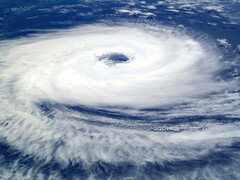On November 17, Google unveiled WeatherNext 2, its latest AI-powered weather system, which reportedly represents a major leap over its predecessor. According to the company, the new model delivers forecasts up to eight times faster and outperforms the original WeatherNext in 99.9% of key metrics, including temperature, humidity, and wind speed. The system was developed by Google’s in-house research teams, DeepMind and Google Research.
These improvements are driven by a new model architecture known as the Functional Generative Network (FGN). This AI model intentionally incorporates noise into its calculations by adding small random signals that mimic natural fluctuations. Because the real atmosphere is also shaped by constant irregularities, this approach allows the model to simulate weather systems more realistically and generate more accurate forecasts.
One of the most significant improvements is speed: WeatherNext 2 generates forecasts about eight times faster than its predecessor. Traditional physics-based models often require hours of processing on powerful supercomputers, but the new AI system produces results in under a minute using just a single TPU, Google’s specialized AI chip. It also updates forecasts every hour, compared to the previous six-hour intervals, allowing weather changes to be detected earlier and reflected in services more quickly.
Early detection of hazardous weather events
WeatherNext 2 doesn’t just analyze individual data points – it also captures the complex interactions between temperature, pressure, humidity, and wind patterns. According to its developers, this allows the system to identify severe weather events such as hurricanes more accurately and predict their paths up to three days in advance. It can also detect heatwaves earlier. However, Google notes that forecasts involving rain and snow may still lack accuracy due to incomplete training data in those areas.
Already available across several platforms
WeatherNext 2 is already integrated into several Google services, including Google Search, the Pixel Weather app, and the Google Maps Platform through its Weather API. The enhanced forecasts will also be added directly to Google Maps in the near future. Developers and researchers can access the model through Google Earth Engine, BigQuery, and an early access program on Vertex AI.
Source(s)
Image source: Wiki Images / Pixabay




















